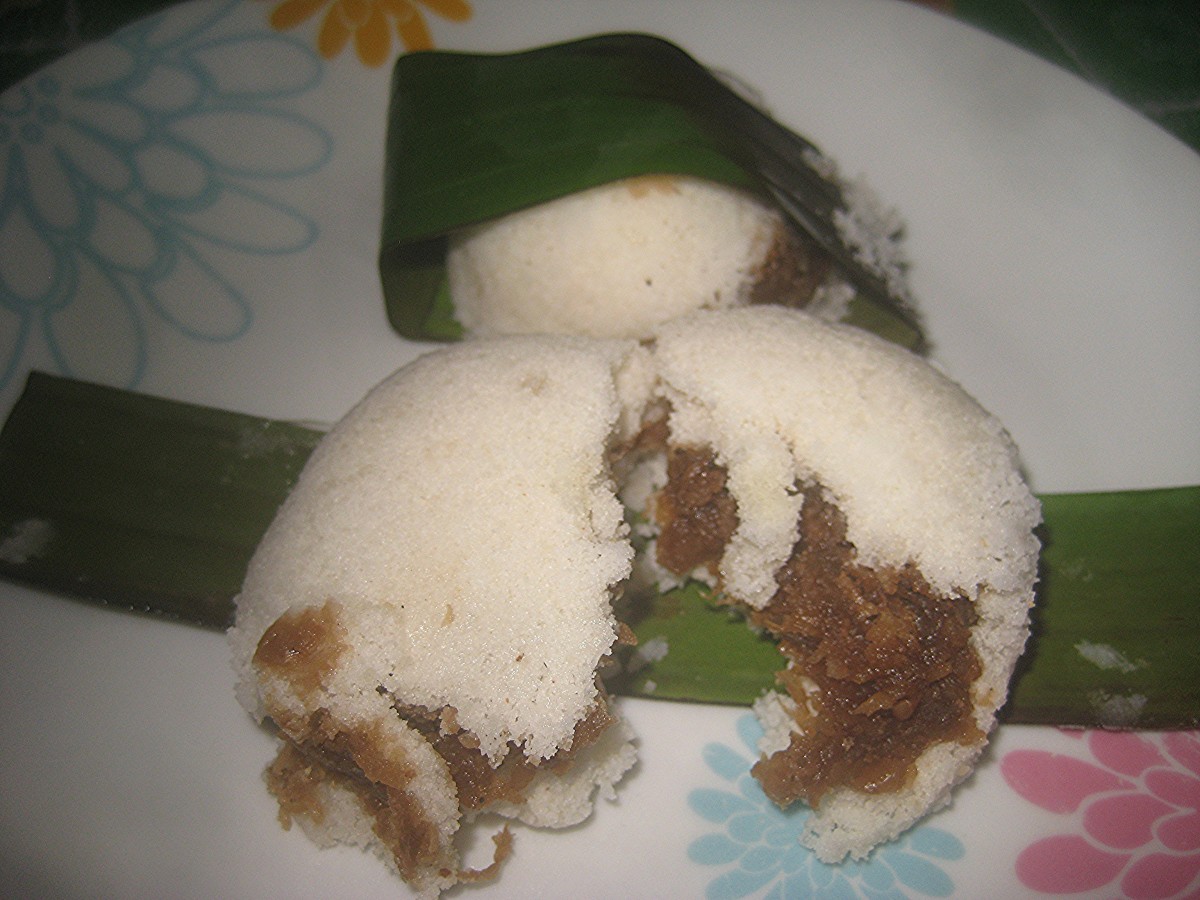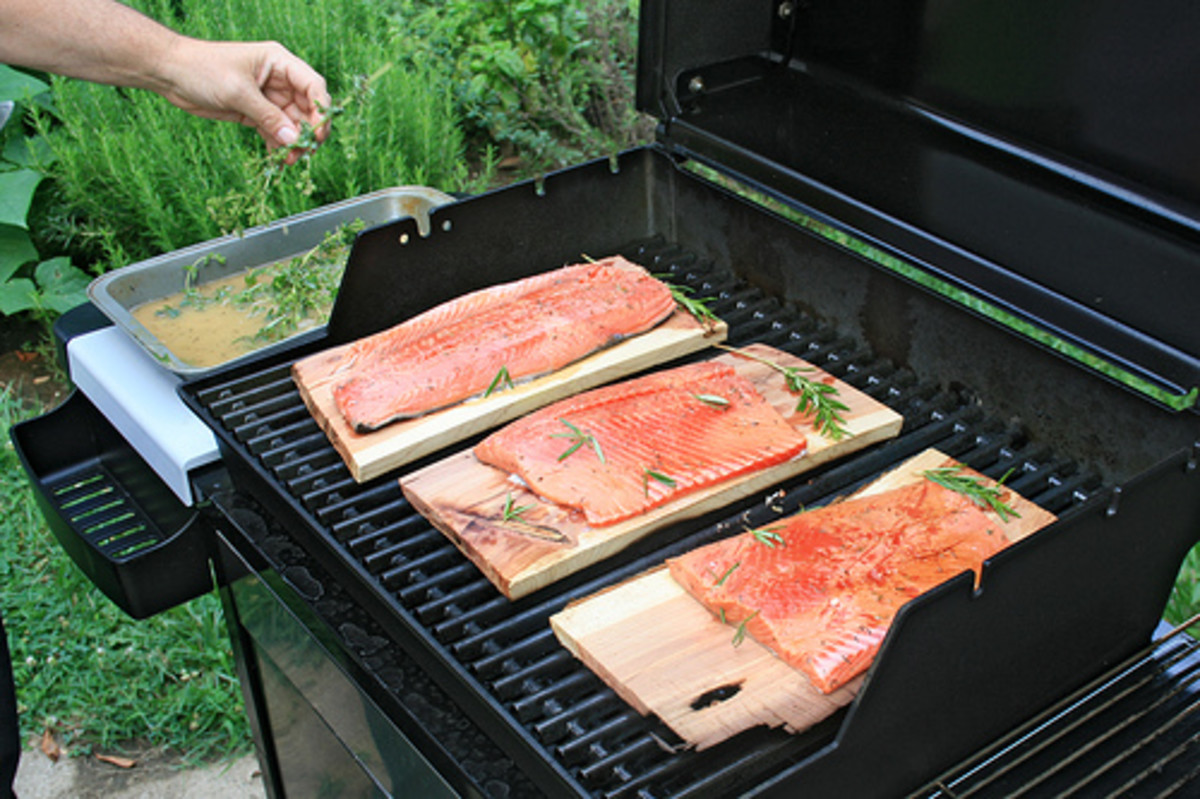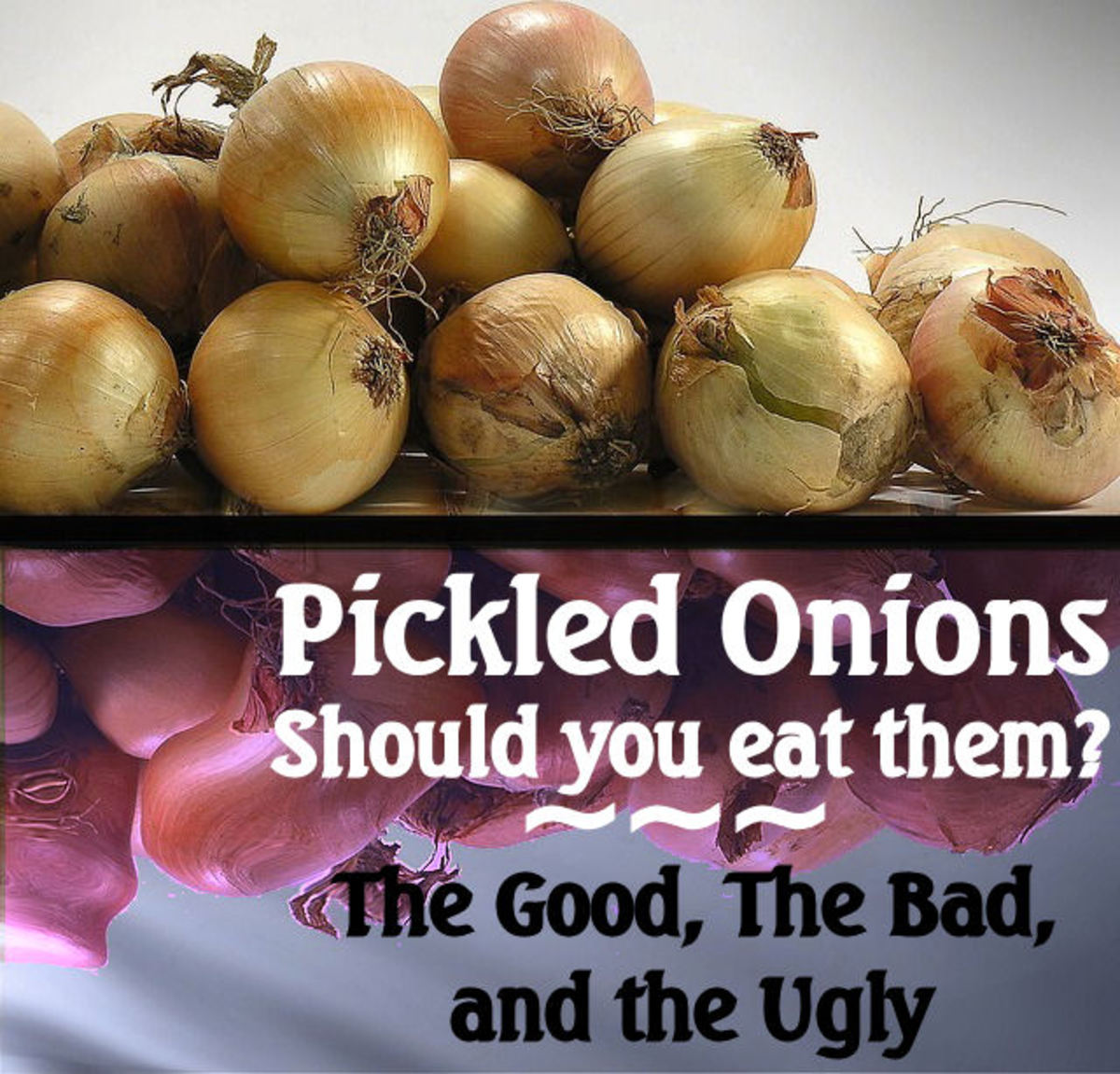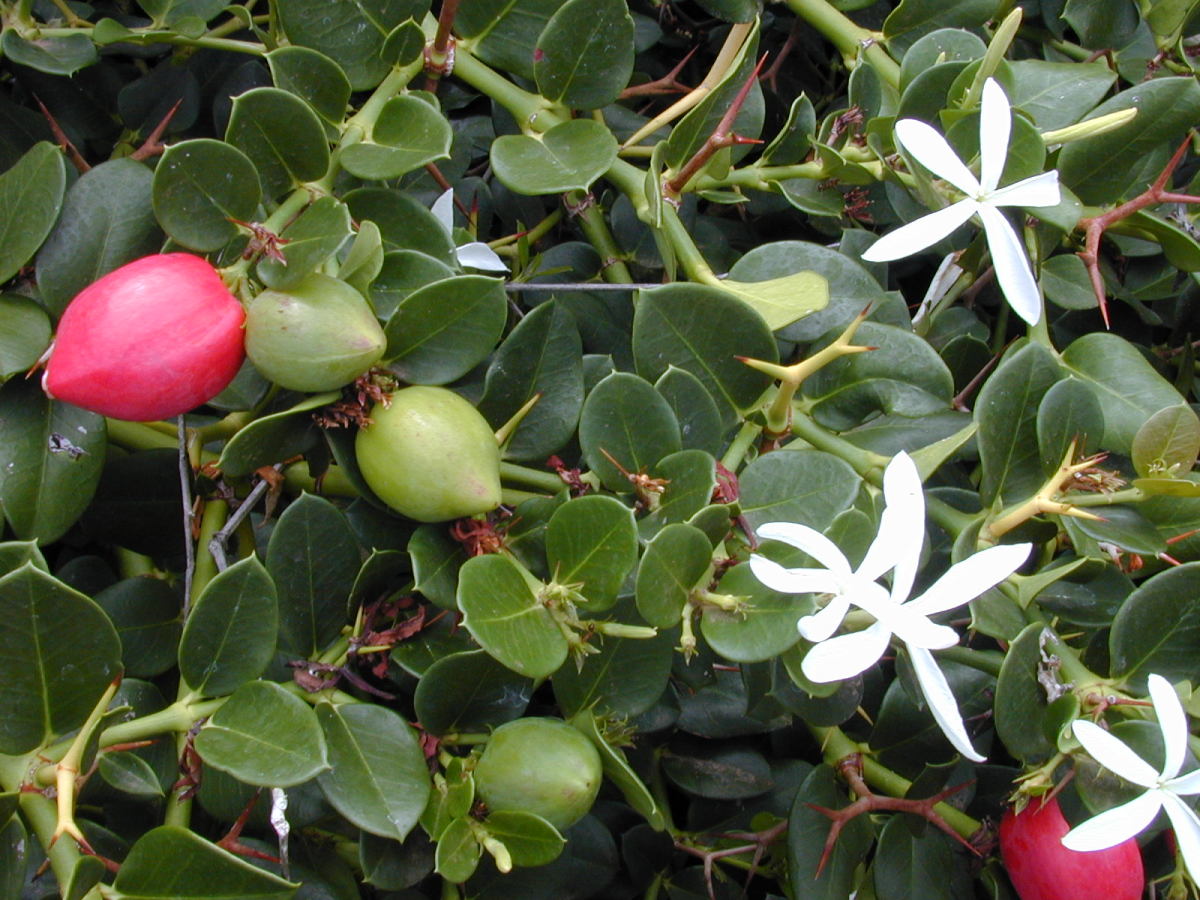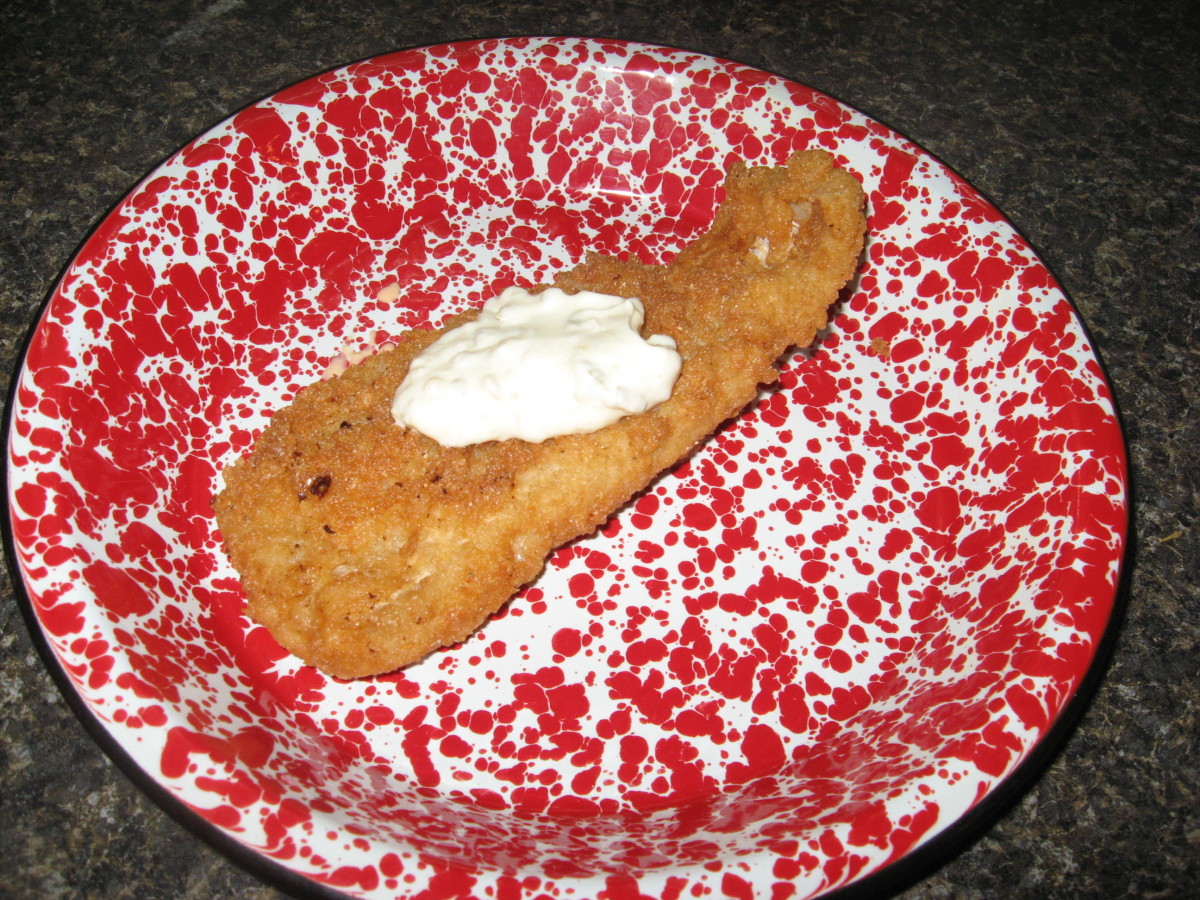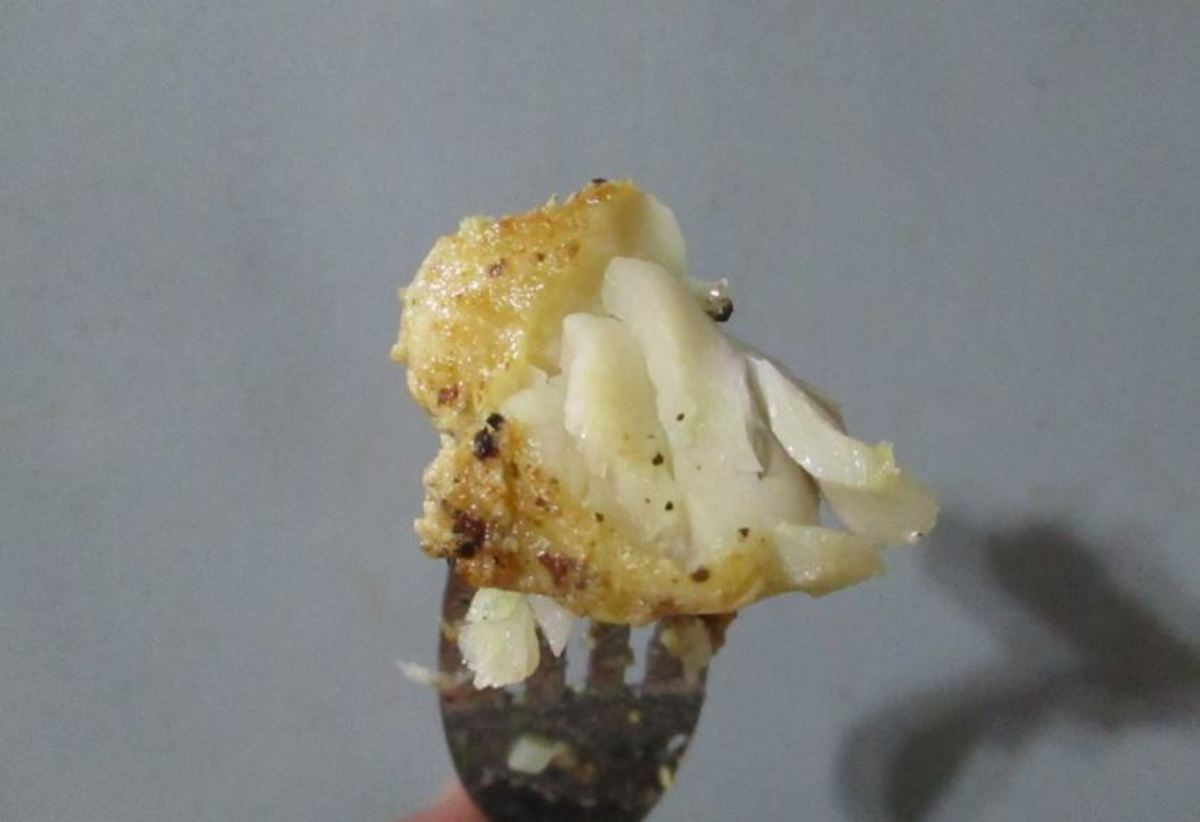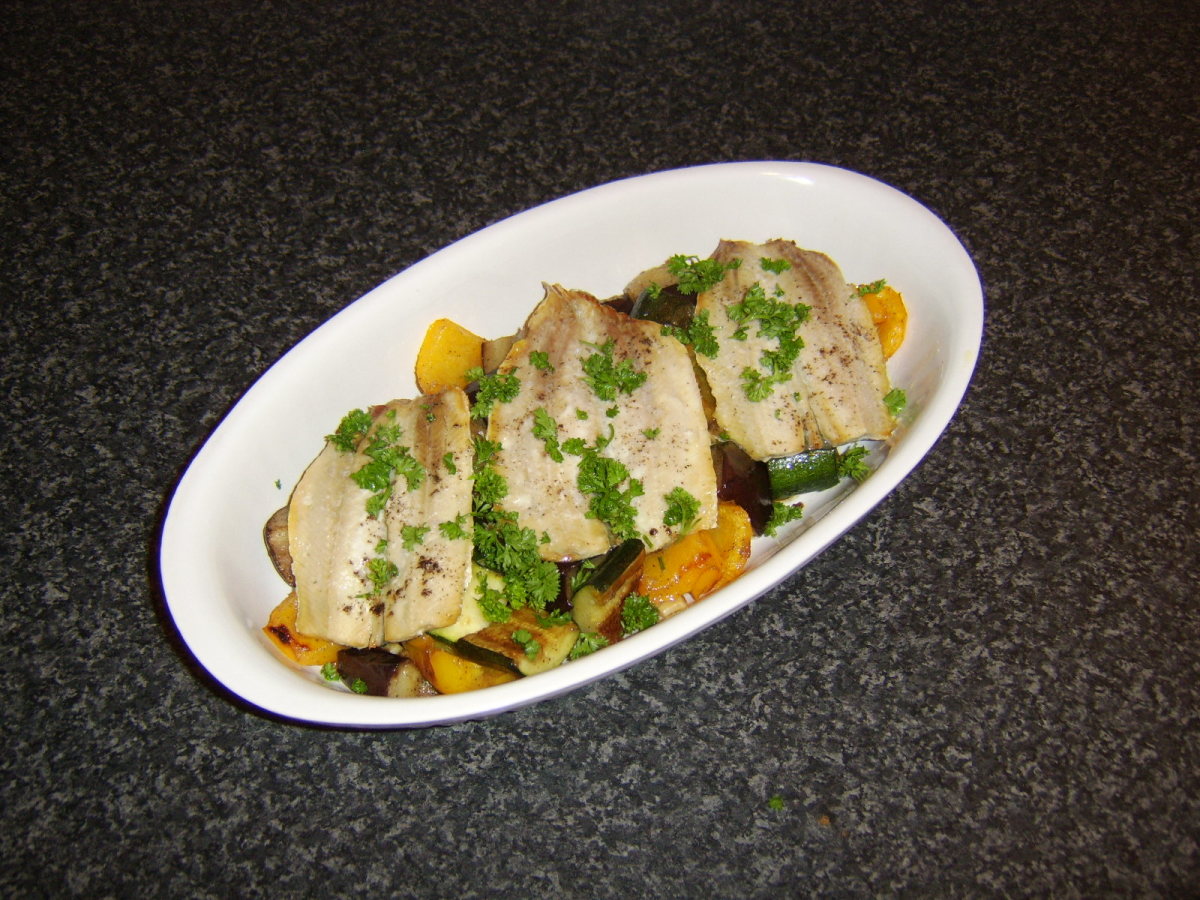Tropical Cooking with Travel Man: 2nd Dish - Fish in Vinegar
Langkoy or Beltfish
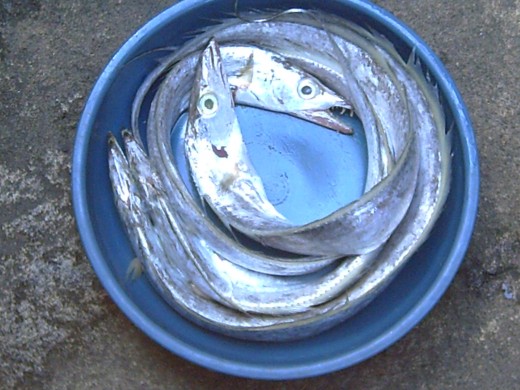
Many varieties of edible fishes abound in the Philippine waters. I can boast about it because everyday, small businessmen are selling fishes in our place. The typical shoutouts are "tilapia", "tulingan, "bangus", "dilis", "galunggong", "matang baka", "timon-timon", "tamban", among others. (You can refer to its English terms below.)
What I bought now is the so-called langkoy (espada) or beltfish, a close resemblance to belt and swordfish. This fish is easily cooked, fifteen minutes is enough due to its soft, silvery flesh.
Once again, as a homebody (for now), I was tasked by my mother to cook it quickly for the strong fishy smell signals that it is close to decomposition.
By the way, when you buy fish in the market, you can easily tell that a fish is still fresh, if:
- the eyes are not smoky or reddish;
- it doesn't smell stinky;
- the flesh is not too soft;
- the scales didn't easily peel off.
Another caution is the rumor that some fish vendors are using preservatives (formalin-used in embalming dead people or tawas - sulfuric oxide or even monosodium glutamate-MSG) to make it fresh-looking to the public.
Much better is to but live fish, although it will add to its cost per kilogram.
At least you can be sure that it's safe and not contaminated with harmful chemicals.
Kamias
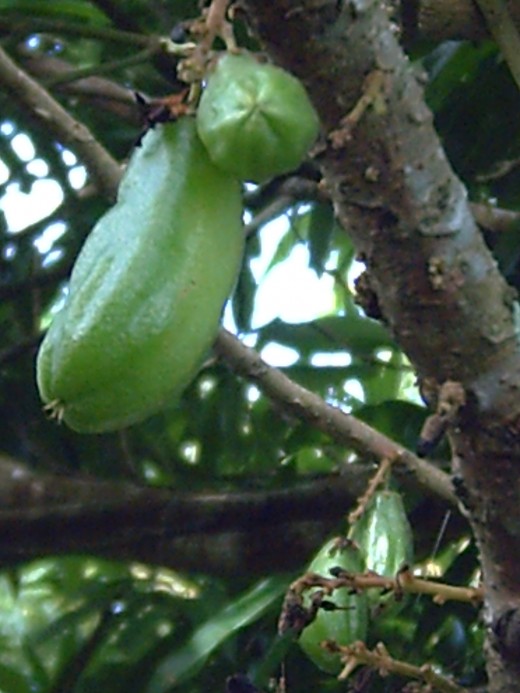
INGREDIENTS:
1/2 kilo, 4 pcs. of medium-sized beltfish or langkoy
1/2 cup of camias
2 whole ripe, medium sized tomatoes, sliced
onion, minced
garlic, slivered
ground black pepper
1/2 cup vinegar, coconut-based
salt, to taste
PROCEDURE:
Clean the fish. Remove intestines and the smelly blood on it's stomach.
Cut into bite size.
Put on the pan, with banana leaf underneath the cleaned fish.
Top with spices.
Pour the vinegar evenly.
Cook in a medium fire for 15 minutes. Salt to taste
Serves 6.
It's good during lunchtime. Happy eating!!!
OTHER WAYS OF COOKING FISH
It can be fried, grilled, smoked or even sun-dried. Most Bicolanos, usually add coconut milk after cooking it with vinegar.
- Fried fish can be garnishes with tomatoes or even mayonnaise. Make a dip out of soya sauce (with vinegar, pepper, tomatoes, onion, garlic, black pepper with little salt and sugar) or just a plain vinegar (with pounded garlic) or banana or tomato catsup.
- Grilled fish is best when the fish is a fresh catch. The fish tastes succulent (somewhat sweet) and enhances it with just a drizzle of lemon juice, dash of salt and pepper.
- Sun-dried fish or tuyo and smoked-fish are smelly when cooked that others don't want to eat it. Villagers, like me, get used to eat it with champorado (glutinous rice with cocoa powder and sugar plus coconut milk or cream). Or eat it with fried rice and hot, steaming coffee in the morning with tomato garnishing or vinegar dip.
- Fish fillets with bread crumbs are popular in posh restaurants and it cost more, but you can cook it at home, too.
Any suggestions in mind? Feel free to add it on your comments.
Let's Cook Langkoy
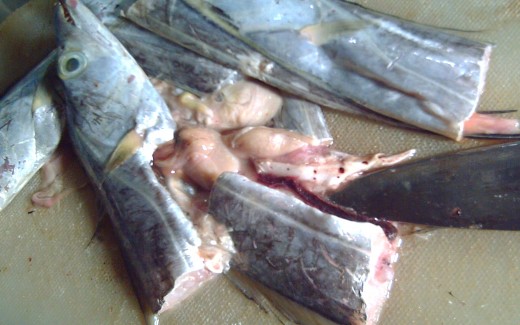
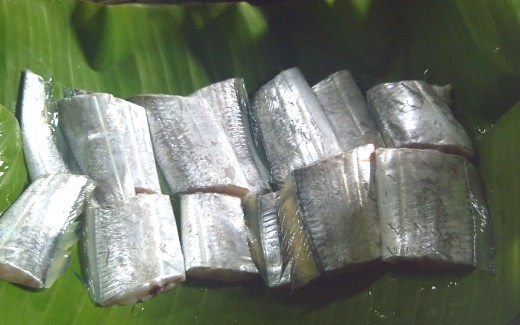
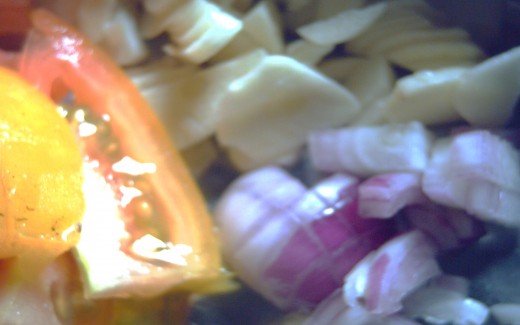
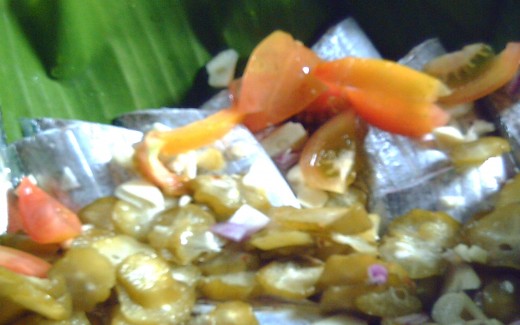
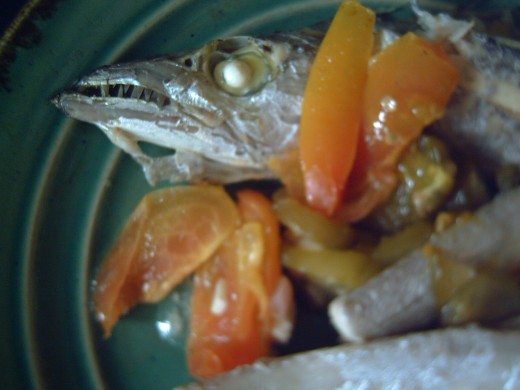
Nutritional Values
1. Fish -are an excellent source of high-quality proteins with sufficient amount of all the essential amino acids that help maintain the well-being of an individual. Fish oils are good source of Vitamin D, or the sun vitamin.
The most prominent fats in fish are omega-3 fatty acids: ecosapentaenoic acid (EPA), dicosahexanoic acid (DHA), and the essential fatty acid linolenic acid. Omega-3s, also found in human breast milk, are most abundant in fish living in cold waters (anchovy, herring, mackerel, menhaden, salmon, sardines, trout, tuna).
Caution: Never eat bones of the fish , unless it is from tinned sardines which you can eat it without the danger of choking.
2. Kamias - Ginger Lily has a natural high oxalic acid content that can remove stains from clothes, metal blades and hands. As one of Philippine alternative medicines or herbal plants, it is known as an oral antidiabetic therapy. It's leaves and fruits and even bark ( concoction) are important in controlling fever, flu, cough and other diseases. It's juice is a good protective tonic after childbirth.
3. Tomatoes - are known as good source of antioxidant known as lycopene, protects our heart from incurring heart attacks. It is also good for the maintenance of our colon and for a healthy prostate glands.
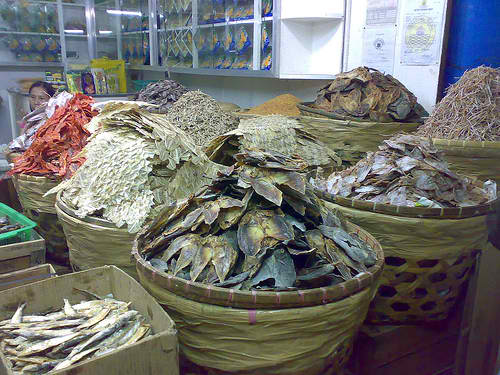
Philippine Edible Fishes
The following Philippine edible fishes are the most popular. I'm sure you're familiar with it as the fishermen, their wives and children and fish vendors shout it while passing the street near your home.
You don't have to memorize it. By the sife and features of each fish and as you frequent the wet market, you can never be wrong once you buy it for a day's menu.
TAGALOG AND LOCAL NAMES - ENGLISH and OTHER REGIONAL NAMES
-
Alakaak Tuel, balat, dulama - Croaker
Alumahan Tuna, tambacol, tanigi, tanigigi - Long-jawed Mackerel
Apahap Katuyot, matang-pusa, mangagat - Sea bass; bulgan(Negros); Barramundi (Australia)
Asohos - Whiting
Bakoko - Sea bream, reddish variety or sweet lips; related to snapper, with a smaller mouth; passed off as grouper (lapu-lapu)
Bañgus - Milkfish
Bisugo - Threadfin bream
Betilya -Emperor, white snapper; passed off as maya-maya
Blue marlin / Royal blue marlin - Swordfish (billfish)
Chabita Hiwas, Isabita, Bilong-bilong, Tahas - Moonfish
Dagum-dagum Kabayo-kabayohan - Seahorse
Dalag- Mud fish
Dalagang bukid (Lapas, morong, boyoyod) - Yellow tail fusilier
Danggit - Rabbit fish with white dots
Dapa - Indian halibut or tongue sole
Dilis (Bulinau, silag, bombra, sibuyan)- Anchovy
Dorado or kabayo Mahi-mahi, - dolphin fish
Duhol - Sea snake
Espada - Beltfish
Galunggong - Hard-tail mackerel (galunggong babae); round scad (galunggong lalaki), muro-aji in Japan.
Gindara - Oil fish (escolar); two types: smooth-skinned and rough-skinned, the latter with a higher oil content; for both, servings of more than 6 oz or 150 g may cause bothersome loose oily stools, for which it has been referred to as "xenical' fish. A good "colon-cleansing" fish, but a traveler's nightmare, a fish to avoid if travel is contemplated in a day or two.
Hasa-hasa - Short-bodied mackerel
Haol-haol Bilis, Tamban-tuloy - Sardines
Hito - Catfish
Isdang lawin- Flying fish
Japayuki - Mackerel
Kanduli - Salmon catfish
Labahita (Mangadlit, isdang ilong, pulang ikog) - Surgeon fish or unicorn fish
Lapu-lapu Bato-bato Kulapo, Kakab - Grouper Loro Parrot fish, brightly colored with beak-shaped mouth
Malasugui - Black or white marlin Maming Wrasse
Matang baka - Purse-eyed scad
Matang-dagat -Tilefish
Matumbok - Sailfish
Maya-maya (Bambangon, matangal, alsis) - Red snapper
Pagi - Manta orsting ray
Palos - Eel
Pampano Apahan, damis lawin, pulang buntot - Pomfret, silver or black
Pla-pla - Tilapia bigger than 1 kg
Sapsap Hiwas, Laway-laway - Small flat fish,Ponyfish
Salay-salay Pampano, Apahay, Tarakitok - Smooth-tailed trevally
Sinarapan - Mistichthys Luzonensi, world's smallest edible fish available only in Buhi, Bicol
Talakitok Tambakol Tulingan, barilis, talingay - Skipjack tuna
Tamban - Sardinella
TanguingueTangi,Tanige - Spanish mackerel; kingfish (U.S.); a bigger variety is called wahoo.
Tawilis - Herring; found only in Taal Lake.
All About Tropical Cooking
More on Tropical Cooking
- Tropical Cooking with Travel Man: 1st Main Dish - Dr...
Tropical Cooking is an innovation of this hubber, travelman1971, in order to distinguish his hubs featuring home cooking in the Philippines. The first installment features LAING, the most-sought-after regional dish in the Bicol Region. - Tropical Cooking with Travel Man: 2nd Dish - Fish in...
LANGKOY (All photos taken by; Travel Man -24March2011-except the dried fish) Many varieties of edible fishes abound in the Philippine waters. I can boast about it because everyday, small businessmen are selling fishes in our place. The typical... - Tropical Cooking with Travel Man: 3rd Main Dish - Ch...
Our native hen was not fit to lay eggs and to stop her from laying eggs elsewhere, we decided to make a chicken stew or tinola in our Filipino language, due to the insistent demand of my niece and my mother. I waited for that hen to rest on the... - Tropical Cooking with Travel Man: 4th Main Dish - Pa...
My 4th main dish is a personal innovation regarding home cooked noodles. In this edition of Tropical Cooking, I stir fried young coconut meat (stripped) utilizing other local ingredients that made this dish my personal triumph in the kitchen. Read on - Tropical Cooking with Travel Man: 5th Main Dish - Pa...
It's raining outside; I mean, continuously, due to the tropical storm Falcon. Then, I heard a crack sound from our backyard. And lo! My one-year old papaya just fell down due to the gusty wind, with all the... - Tropical Cooking with Travel Man: 6th Main Dish - Pi...
Boiled coconut patties can compete with the usual beef patties used as burgers or filling for bunny breads. Bicolanos (the term for Filipinos in Bicol region where I live) are popular with Pinangat or Coconut... - Tropical Cooking with Travel Man: Appetizer/Side Dis...
Making a hibiscus salad is new to me. I already knew the French dressing but I doubt I can endure the taste of it, although it looks enticing. I overheard from our Jamaican stevedores when were at Kingston... - Tropical Cooking with Travel Man: Appetizer/Side Dis...
Pickling had been used as an earliest way of food preservation for vegetables. The mixture is usually composed of excess vegetables submerged in brine solution. This will be used later as side-dish or... - Tropical Cooking with Travel Man - 1st Beverage: Hom...
Every heard of cocoa drink? I will give you some pointers on how to make it at home with the ingredients available. Thanks to the Mayans, (circa 15th century) of South America who popularized this tonic drink or beverage that is considered as... - Tropical Cooking with Travel Man: 1st Dessert - Heal...
Eating fresh fruits can bring important benefits in our body. It gives us the proper nutrients we needed and cleanse our body from toxic materials. Most fruits are eaten raw, so, we must choose those...


